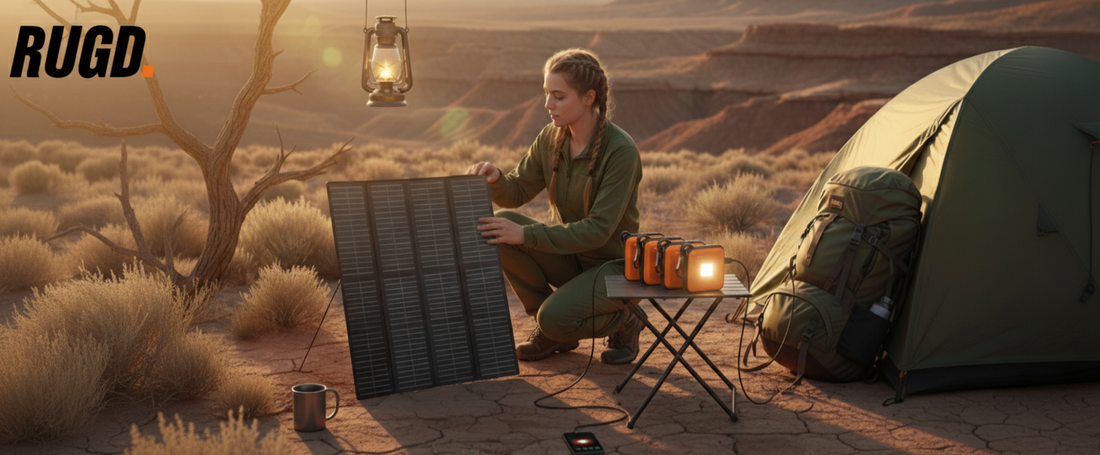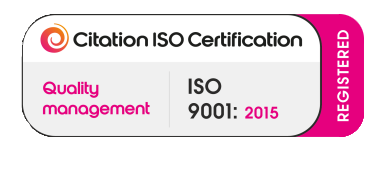
Solar Charging vs Power Banks: Which is Better for Camping?
Share
When you’re venturing into the wild, keeping your devices powered can be just as important as your tent or stove. From GPS units to cameras and phones, portable energy has become an essential part of modern camping. But when it comes to staying charged off-grid, which is better — solar charging or power banks?
Let’s explore how both perform outdoors, and which one makes the most sense for your next adventure.
Understanding the Two Power Options
What Is Solar Charging?
Solar chargers use photovoltaic panels to convert sunlight into usable energy. That power can charge your device directly or fill a portable battery for later use.
They’re clean, renewable, and ideal for long trips in sunny regions where outlets are nowhere to be found.
What Is a Power Bank?
A power bank is a rechargeable battery that stores energy for later. Once charged, it can deliver power quickly and consistently — whether it’s midnight at camp or cloudy during the day.
Power banks are compact, reliable, and ideal for short trips or unpredictable weather.
Performance Comparison: Solar vs Power Banks
| Feature | Solar Chargers | Power Banks |
|---|---|---|
| Charging Speed | Slower; depends on sunlight | Fast and consistent |
| Weather Dependence | Needs direct sunlight | Works anywhere, anytime |
| Storage Capacity | Limited (10,000–20,000mAh) | Can exceed 30,000mAh |
| Eco-Friendliness | 100% renewable energy | Requires pre-charging |
| Best Use Case | Extended sunny expeditions | Weekend or cloudy camping |
Advantages of Solar Charging
- Sustainable Power: Perfect for eco-conscious campers who prefer renewable energy.
- Endless Supply: As long as there’s sunlight, you’ll never run out of juice.
- Ideal for Remote Locations: Excellent for multi-day off-grid treks.
- Pairs with Power Banks: Use solar panels to recharge your power bank by day.
For best results, combine both — solar for energy collection and a RUGD Power Bank for energy storage and reliability.
Advantages of Power Banks
- Instant Power: No waiting for sunlight.
- High Capacity: Powers multiple devices several times over.
- Weatherproof Dependability: Works in rain, shade, or snow.
- Rugged Design: The RUGD Power Brick I is IP67-rated for water and dust resistance — perfect for outdoor environments.
For campers who prefer reliability and speed, a durable power bank remains the most practical choice.
Combining Both for Maximum Efficiency
Veteran campers often use both solutions together:
- Solar panels charge power banks during the day.
- Power banks recharge devices overnight or during cloudy weather.
This hybrid setup ensures your essentials — phones, lights, or cameras — stay powered no matter the forecast.
Explore the Outdoor Tech Gear Collection to build a camping power kit designed for all conditions.
Energy and Endurance Go Hand in Hand
Reliable power is vital outdoors — not just for devices, but for you too. Just as your gadgets rely on steady energy, your body performs best when fully fuelled and hydrated. Before your next trip, consider how energy recovery and hydration therapy can keep you performing at your peak.
Explore wellness options like Viva Wellness Drip Madrid to learn how proper hydration supports endurance and focus during long, active days in nature.
Expert Tip: Manage Energy Wisely
- Switch devices to low-power mode when hiking.
- Charge only when needed to conserve capacity.
- Use USB-C fast charging cables for quicker, more efficient energy transfer.
- Keep both solar panels and power banks out of direct midday heat to preserve battery life.
Frequently Asked Questions
Which charges devices faster: solar panels or power banks?
Power banks. They deliver consistent output, while solar speed depends on sunlight intensity and panel size.
Can I recharge a power bank with a solar panel?
Yes. Connect the solar panel’s USB output to your power bank. Expect slower refill times than wall charging.
What capacity power bank is best for a weekend trip?
20,000–30,000mAh covers phones, headlamps, and a camera for 1–2 nights without sun.
Are solar chargers reliable in cloudy or forested campsites?
They work, but efficiency drops sharply. Use a hybrid setup: solar by day to top up a power bank, bank by night.
Do I need USB-C PD for camping gear?
Recommended. USB-C Power Delivery shortens charge time for modern phones, action cams, and some GPS units.
What’s more rugged for harsh weather?
An IP-rated power bank (e.g., RUGD Power Brick I) generally handles rain, dust, and knocks better than foldable panels.
Verdict: The Smart Camper’s Choice
If you camp occasionally or want immediate power, go for a power bank — compact, reliable, and fast.
If you travel for days or prefer sustainable energy, solar charging offers freedom from the plug.
For ultimate versatility, use both: solar by day, power bank by night.
Pair your setup with the RUGD Power Brick I to stay powered in any terrain.

